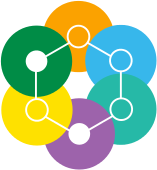
See how we create personalized financial projections based on your client’s lifestyle and goals
Implementation is easy

Embed HALO on your own website.
Don’t have one? We’ll host it for you. Either way, HALO will look like your assessment, not ours.

Share HALO with your clients.
Encourage clients to take the assessment whenever they have a few free minutes.

Use HALO for prospecting.
HALO sends you the full report, but clients and prospects only receive a snapshot. They have to talk to you to learn more.
Hear what our partners say about HALO
What’s in a Genivity HALO Report
HALO brings science to financial planning to create personalized projections about your clients’ health and care costs.





FAMILY HEALTH RISKS
See a preview of what trouble may come, so you can put together a gameplan years in advance
PROJECTED ACTIVE YEARS
Clients are often surprised by how many healthy years they can expect in retirement.
PROJECTED ASSISTED YEARS
Set evidence-based targets for how many years of long-term care each client needs to plan for.
PROJECTED LONGEVITY
Base clients’ longevity estimates on their unique health, behavior and family, not some generic actuarial table.
PROBABILITY OF LIVING TO 110
Or 95. Or 100. The longer clients live, the more money they need for retirement.
LONGEVITY OPTIMIZER
HALO shows clients how lifestyle changes, like exercising regularly, can increase their longevity and give them more healthy years.
PROJECTED OUT-OF-POCKET CARE COSTS
Plan around an accurate estimate for this year, next year and every other year all the way through retirement.
PROJECTED ASSISTED YEARS CARE COSTS
The Science Behind HALO

THE ALGORITHM
Using her experience in statistics, algorithm design, data analysis, and scientific study, Emily Chang Pd.D has created a unique research-driven approach for understanding risk of disease, projecting longevity, and using that for financial planning. Dr. Chang completed her doctoral work in theoritcal, computational chemistry at Stanford, with post-doctoral work in computational genetics at Stanford Medical School. Previously, she was a health scientist at the consumer genetics company, 23andMe.
DATA SOURCES
Genivity HALO’s projections are powered by over 100 million scientifically relevant data points from more than 90 carefully-vetted and curated data sources including validated data from large studies by the CDC, the SEER Cancer database, the Kaiser Family Foundation, and Social Security Administration. In addition, the Genivity team has evaluated hundreds of studies in high-quality, peer-reviewed academic journals, such as The Journal of the American Medical Association and The New England Journal of Medicine, to find the best parameters for inclusion in the HALO models.
RISK FACTORS
HALO covers all the most statistically important risk factors that affect longevity and years of disability. The model puts a strong emphasis on family health history, including factors such as: Alzheimer’s/dementia, stroke, diabetes, heart disease, obesity, cancer (bladder cancer, colon cancer, breast cancer, kidney cancer, lung cancer, ovarian cancer, pancreatic cancer, skin cancer and prostate cancer), and the overall longevity of parents and grandparents. In addition, the most important lifestyle factors (smoking, exercise, diet, alcohol consumption, BMI, and social support), as well as demographic factors like age, gender, personal health history and ethnicity, are also considered.
GENIVITY BIOLOGICAL AGE
Biological Age is the age at which a person’s risk of disease, based on their family health history, is comparable to an average person of the same gender in the general population. For example, if a 35-year-old woman has a health history of breast cancer, her risk of breast cancer may be more comparable to a typical 45-year-old woman. The model would suggest that this woman with an elevated risk of breast cancer has a Biological Age of 45 years with respect to breast cancer. An overall Biological Age is calculated for each person individually by taking a weighted average of the disease-specific Biological Age for each of the thirteen most common disease conditions. This Biological Age is continuously updated in preparation for the next review of a person’s financial and retirement plan.
Set up a consultation to learn more about HALO
